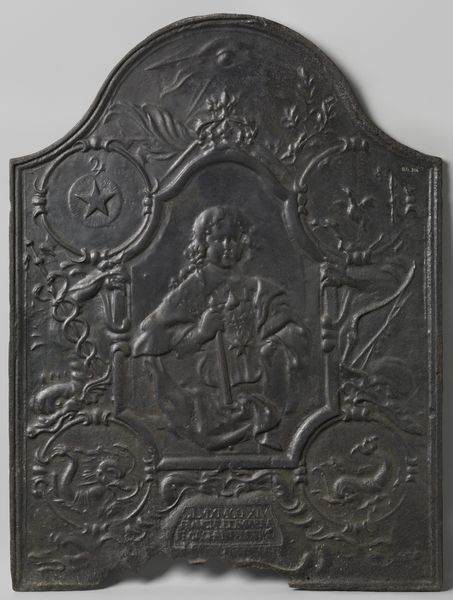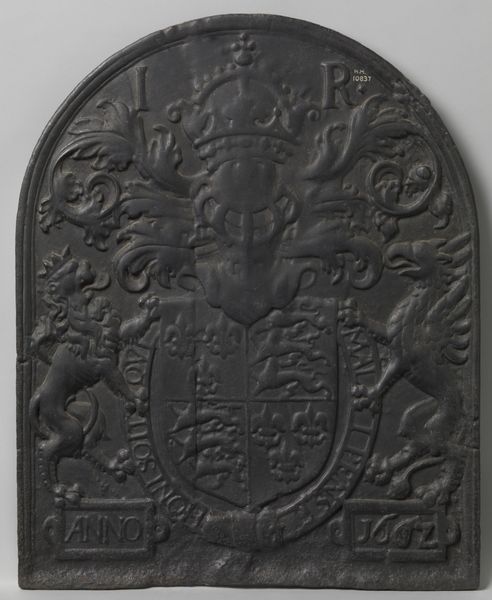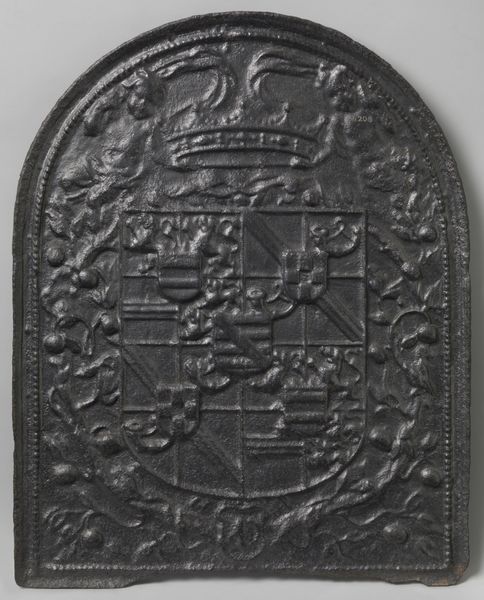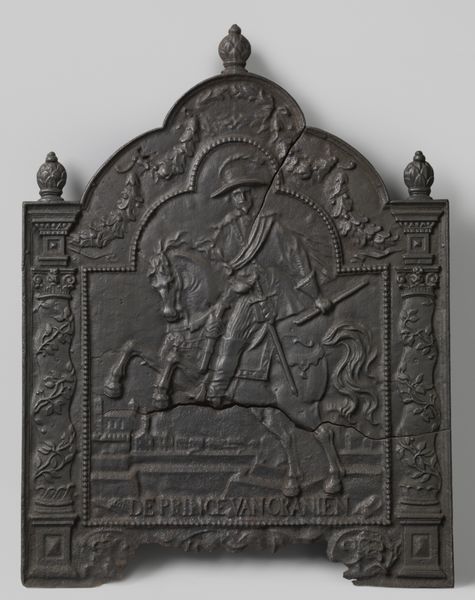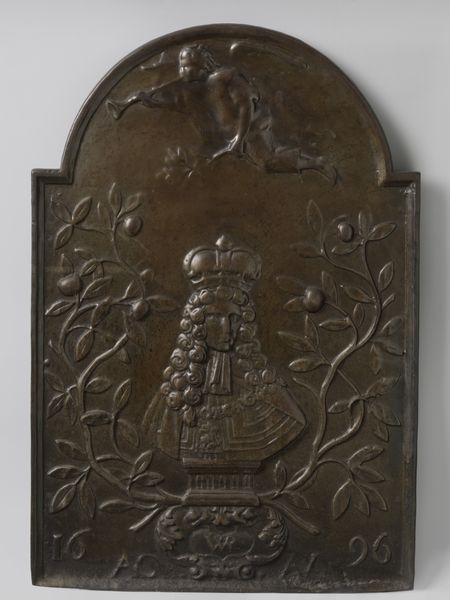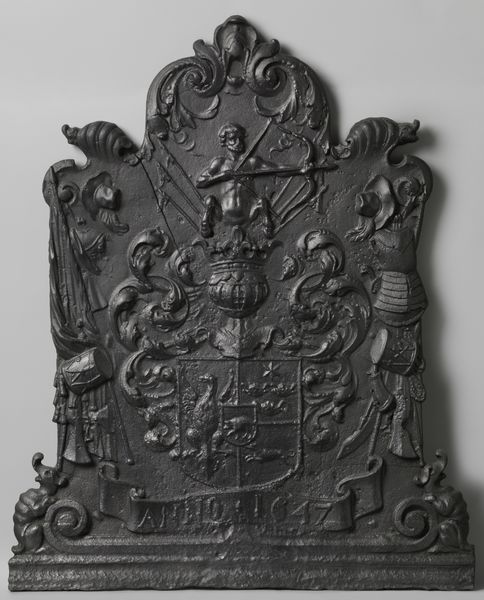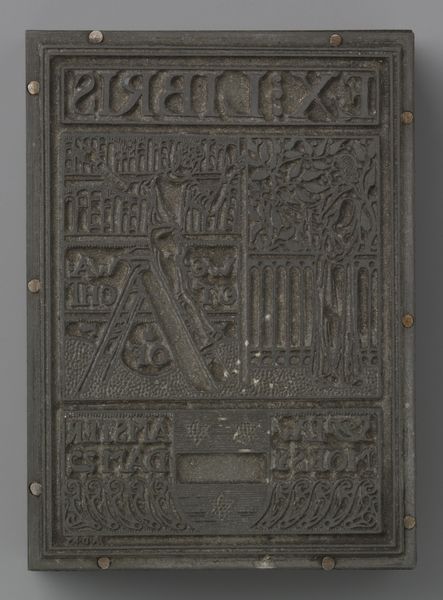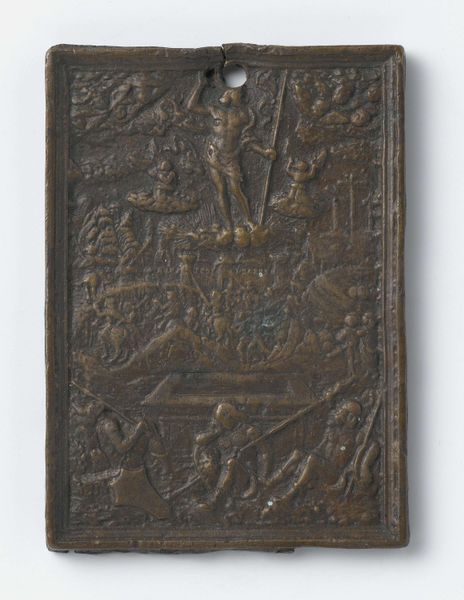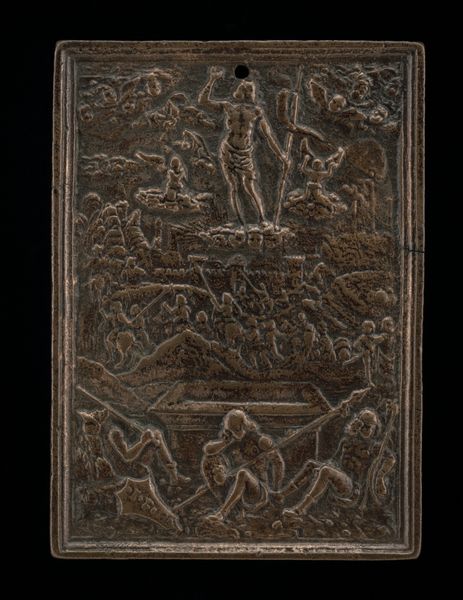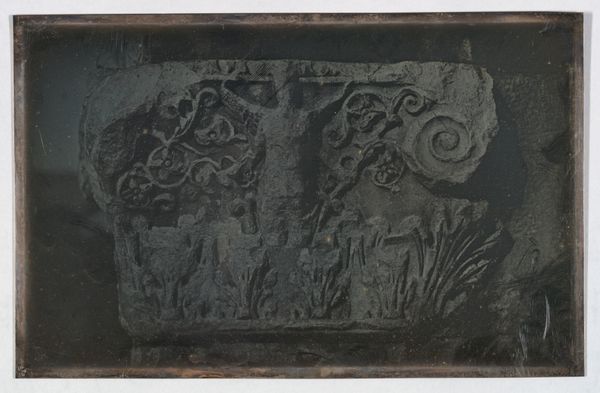
metal, relief, bronze, sculpture
#
narrative-art
#
baroque
#
metal
#
sculpture
#
relief
#
bronze
#
sculptural image
#
sculpture
#
history-painting
Dimensions: height 108.0 cm, width 86.0 cm, weight 57 kg
Copyright: Rijks Museum: Open Domain
This cast-iron fireback, made in 1630 by an anonymous artist, commemorates the Dutch capture of the Spanish Silver Fleet in 1628. The relief depicts the Bay of Matanzas in Cuba, the site of the victory. Above this scene are two busts flanking the year of the work’s creation, framing this event within a specific time and, perhaps, within a narrative of Dutch strength and dominance. The fireback underscores how economic power was often achieved through acts of conquest and exploitation during the early modern period, impacting global power dynamics and trade routes. Consider the symbolism of fire, traditionally associated with purification and destruction, used to represent a moment of colonial triumph. The choice of this scene for a domestic object highlights how deeply entwined the narratives of public triumph and private life were, suggesting that national identity was forged in the intimacy of the home. It’s a stark reminder of how history and identity are shaped by both celebration and violence.
Comments
No comments
Be the first to comment and join the conversation on the ultimate creative platform.
